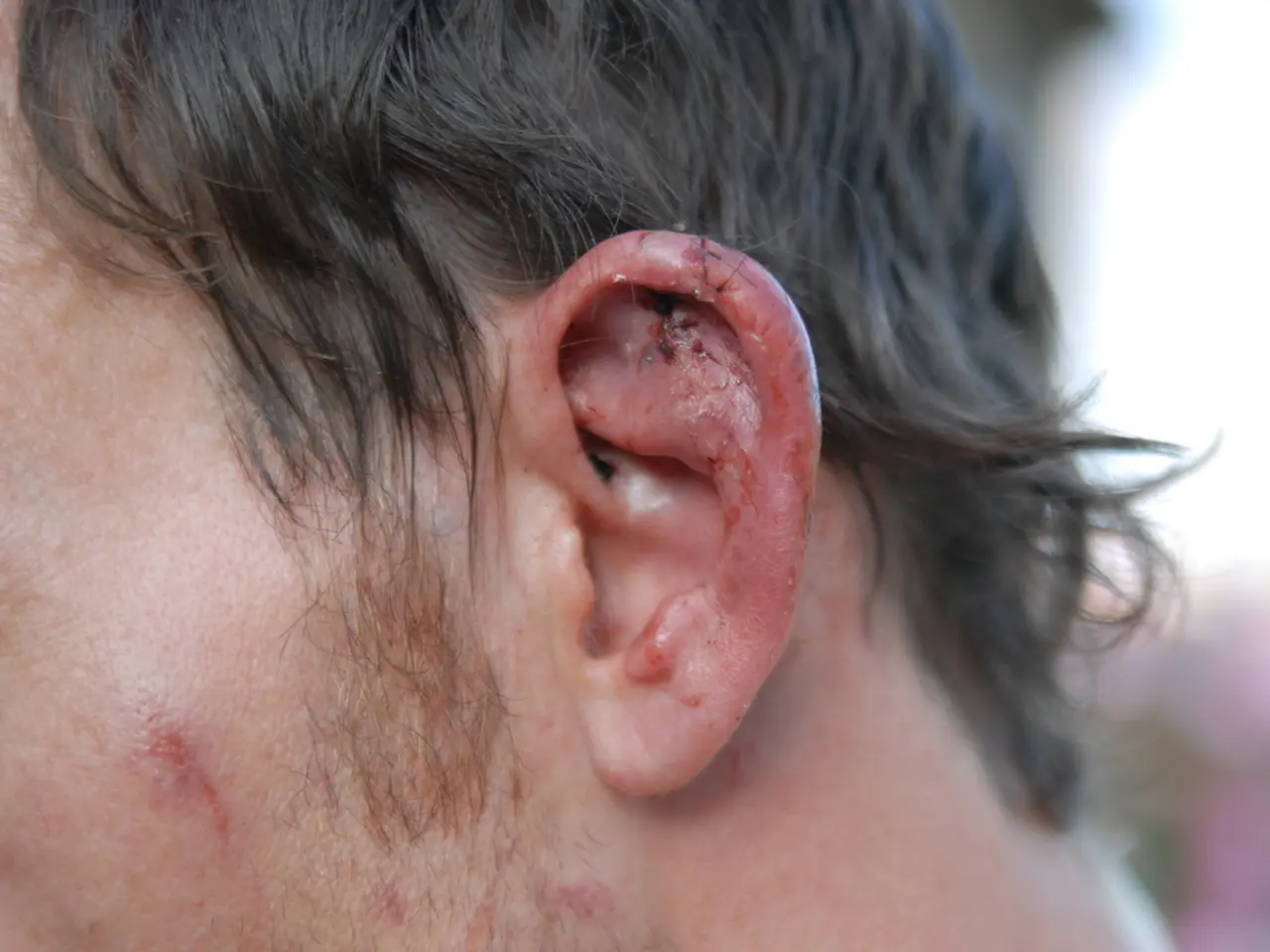Experiencing symptoms that may indicate a blood clot: A guide
Deep Vein Thrombosis, Pulmonary Embolism, and Superficial Thrombophlebitis: Understanding the Risks and Symptoms
Deep Vein Thrombosis (DVT), Pulmonary Embolism (PE), and Superficial Thrombophlebitis are conditions that involve the formation of blood clots in the body. These conditions can have serious consequences if not recognised and treated promptly.
Risk Factors
People at risk of developing DVT include those with slow blood flow due to limited movement, long periods of inactivity, paralysis, injury to a vein, increased estrogen levels (from birth control pills, hormone replacement therapy, pregnancy), certain chronic medical conditions (cancer, heart disease, lung disease, inflammatory bowel disease, inherited blood clotting disorders), smokers, those with obesity, and advanced age.
Superficial thrombophlebitis is a condition where a vein close to the skin's surface becomes inflamed due to a blood clot. Recent research suggests that superficial thrombophlebitis may have a higher risk of serious conditions, including DVT, PE, and cancerous cells.
Symptoms and Diagnosis
The common symptoms of DVT include unilateral leg swelling, pain or tenderness (often described as throbbing or dull), warmth, erythema (redness), and sometimes discoloration of the affected leg. The leg may feel heavy or tight, and superficial veins may appear distended. General symptoms can include fever. Distal pulses are usually normal. Signs often worsen with walking, standing, or foot flexion.
PE, which occurs if a clot travels to the lungs, typically presents with sudden shortness of breath, rapid breathing, chest pain (especially pain worsening on deep breaths), lightheadedness or syncope, and sometimes coughing up blood. PE can be life-threatening and requires urgent medical evaluation.
Superficial thrombophlebitis, in contrast, usually involves inflammation and clot formation in superficial veins, producing a red, tender, warm, and palpable cordlike structure along the affected vein, often without significant swelling of the entire limb. The pain tends to be more localized and superficial compared to the deep, dull pain of DVT. It usually lacks the limb heaviness and tightness seen in DVT and typically does not cause the extensive swelling or systemic symptoms (like fever or signs of PE) that DVT may cause.
Distinguishing Features
| Feature | Deep Vein Thrombosis (DVT) | Pulmonary Embolism (PE) | Superficial Thrombophlebitis | |-------------------------------|------------------------------------------------|-----------------------------------------------------|------------------------------------------------------| | Location of symptoms | Deep veins of leg/thigh/pelvis | Lungs (due to clot migration from leg) | Superficial veins of the leg | | Limb swelling | Usually significant and unilateral | Not applicable | Usually little or no limb swelling | | Pain | Dull, throbbing, worsens with movement | Chest pain, dyspnea | Localized, sharp or burning tenderness along vein | | Skin changes | Warmth, redness, possible discoloration | Not directly observable but may cause systemic signs| Redness and warmth along vein, palpable cord-like vein| | Systemic symptoms | Sometimes fever | Dyspnea, rapid breathing, coughing blood, lightheadedness | Rarely systemic features | | Risk of progression to PE | High | N/A | Low |
Prevention and Treatment
During extended periods of immobility, such as during hospitalization or long-distance air travel, strategies for preventing blood clots include moving around regularly, wearing compression devices, and taking prescription medications (under a doctor's recommendation).
Treatment for DVT and PE typically involves anticoagulant medications to prevent further clotting and dissolve existing clots. In some cases, surgery may be necessary to remove the clot.
Maintaining or achieving a moderate weight and getting regular exercise can help prevent blood clots. If you develop symptoms of DVT, PE, or superficial thrombophlebitis, seek immediate medical attention. Anyone who develops symptoms of DVT or PE should seek emergency medical treatment. People who develop symptoms of superficial thrombophlebitis should also contact their doctor.
When it comes to chronic medical conditions, diabetes, psoriasis, migraine, and multiple sclerosis are examples that might require long-term management.Science continues to advance in understanding the link between various chronic diseases like COPD, predictive heart conditions, and conditions like Obesity and HIV.There's a growing emphasis on health-and-wellness, seeking to incorporate therapies-and-treatments that address both physical and mental health concerns, such as depression and anxiety.Obesity and lack of fitness-and-exercise can increase the risk of cardiovascular-health issues, diabetes, and certain cancers.In terms of mental health, managing conditions like depression often involves a combination of medication, psychological therapies, and lifestyle changes such as nutrition and exercise.Medicare and insurance coverage are essential to ensuring that individuals have access to necessary treatments for a wide range of medical-conditions, including chronic diseases and mental health issues.COPD, a common chronic lung disease, is often associated with smoking, air pollution, and genetics. Its symptoms include shortness of breath, cough, and mucus production.HIV, a virus that attacks the immune system, can lead to AIDS if not treated. It is transmitted through certain bodily fluids. While there is no cure for HIV, antiretroviral therapy can help manage the virus and prevent progression to AIDS.Crohn's disease, an inflammatory bowel disease, can cause abdominal pain, diarrhea, fatigue, and weight loss. It is often managed through a combination of medications, dietary changes, and occasionally surgery.DVT, a condition involving the formation of blood clots in the body, shares risk factors with certain chronic diseases like cancer, heart disease, and lung disease.Complications from untreated DVT can include pulmonary embolism and superficial thrombophlebitis, both of which can have serious consequences if not recognized and treated promptly.Preventative measures for DVT, during periods of immobility, include moving around regularly, wearing compression devices, and taking prescribed medications, always under a doctor's recommendation.




